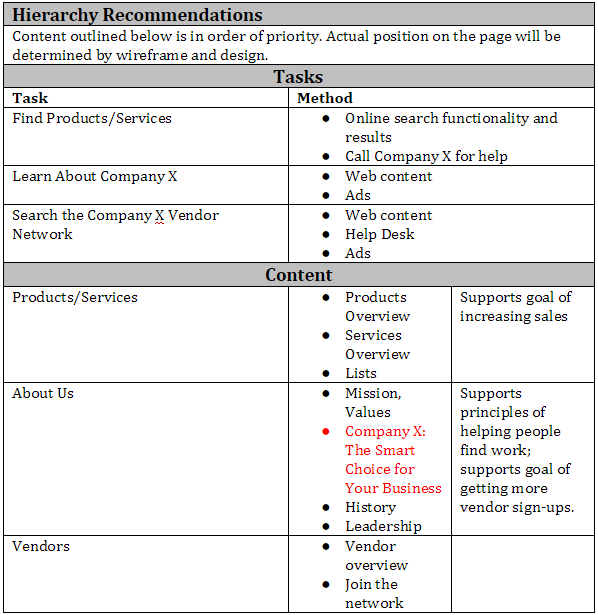August 7, 2015
| Article | Content
What to Expect When You're Expecting (A Content Strategy)
If content is king, then content strategy just might be the kingmaker. While everyone understands what a writer does, not many can explain exactly what a content strategist does.
It's quite simple, really.
A content strategist plans for the creation, location, and governance of your brand's content. Content strategy is big picture thinking + all-star writing. It's a process that guides every website redesign, and something my team has the privilege of doing on a daily basis.
Content strategy is far from cookie cutter; the approach may vary from strategist to strategist and even from project to project. But there are some common deliverables that, as a client, you can expect to see throughout the content strategy process. Once you wipe the blood, sweat, and tears off of these documents, here's what you'll find.
Taking Stock with a Content Audit
As the old saying goes, you can't know where you're going unless you know where you've been. Content audits tell you where you've been. We typically begin the process with a website crawl that dumps all of your existing website's URLs into a massive Excel document, along with inlinks, page level, and word count information. We layer traffic metrics into the document to better weight the importance of each page. This crawl allows us to glean some crucial insight into how your site is structured and which content items are most important to users.
Once we review the crawl results, we start to build the content audit. This manual process involves going through your website, page by page, and listing the URL, page name, page topic, and any details that catch our eye. A content audit is the best way to kick off a content strategy engagement, as it allows the content strategist to learn about the client's business.
The content audit gets us thinking about essential content questions such as:
- What information do we have that users want?
- What information are we missing that users want?
- What information do we have that users don't want?
- What information are we repeating in multiple places? What can we cut?
- Is there information we have that should be repeated in other places?
Getting Organized with a Content Hierarchy
Another common content strategy deliverable is the content hierarchy. We build this once we know what content you have and what content you need (based on discovery research).
While not all content strategists use this deliverable, we find that it can be a helpful way to work toward defining next steps in the information architecture (IA) and user interface (UI) processes.
A content hierarchy shows you how your specific content should be prioritized, and it's the first step toward organizing your content. We structure this document around top tasks and methods, and tie these to business objectives.
Here's an example of a simple content hierarchy, with content that needs to be created highlighted in red:

Moving Forward with Content Recommendations
We often like to fold our content recommendations into an executive summary that speaks to what we've learned throughout our engagement. We might begin with a review of our discovery research - interviews and competitive analysis figure prominently in this stage.
We outline the situation you face and define opportunities that we see for your brand. We review what we learned from the content audit, restate the business priorities for your project, and discuss the ways in which these business objectives inform the content hierarchy.
Then we move to the content recommendations. These are the key pieces of content that will help your brand accomplish its goals, so it's hard to overstate the importance of this deliverable.
Executing the Strategy in a Copy Document
As a writer, I get excited about this final deliverable. This is the big, fat copy document that serves as the culmination of all of our learning, planning, and organization.
We structure the copy for this deliverable after the site map, which is informed by the content audit, content hierarchy, content recommendations, and information architecture. When we write copy for your website, we do so with a solid understanding of both your customers and your business goals.
We always create your site copy with web writing best practices in mind. This means that the writing is clear, concise, engaging, easy to scan, and written in the appropriate brand voice.
As soon as we have a draft ready to go, we share it with you (the client) for feedback. We want to make sure your brand is represented the way you want it to be, so this step is critical. Once you've had a chance to review the copy, we incorporate your edits and deliver a final copy document to our developers to plug in to your beautiful new website.
Content Strategy: The Blueprint for Your Brand's Success
There's so much noise and clutter online, and things change in the blink of a page refresh. But with a strong content strategy in place, you can feel confident that your brand will prevail. Your content will be leaner and smarter, trimmed of the dead ends and insignificant pages that waste time and frustrate users.
Your content and messaging will be carefully designed to capture your audience's attention and convince them to stay awhile. Your new website will draw them in and guide them toward conversion. And what is it that draws them in and guides them along? It's content - the king in the room.